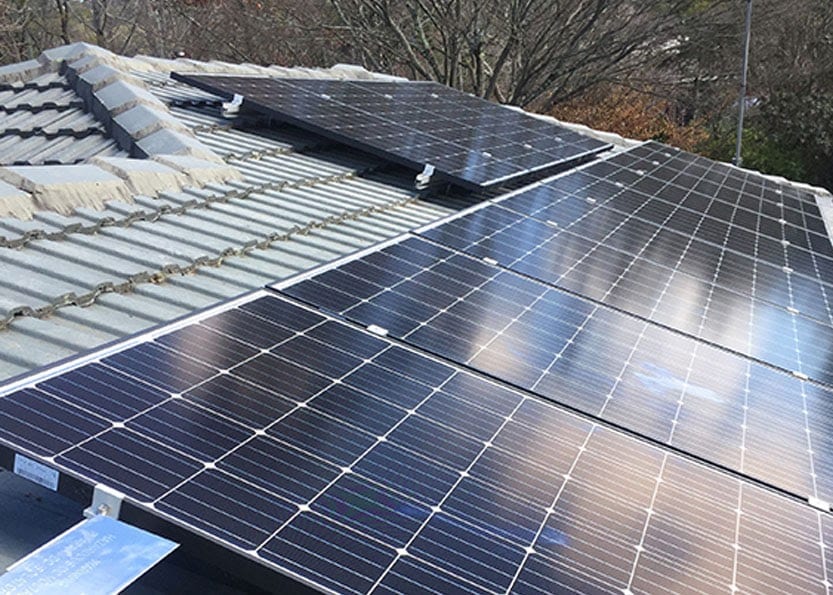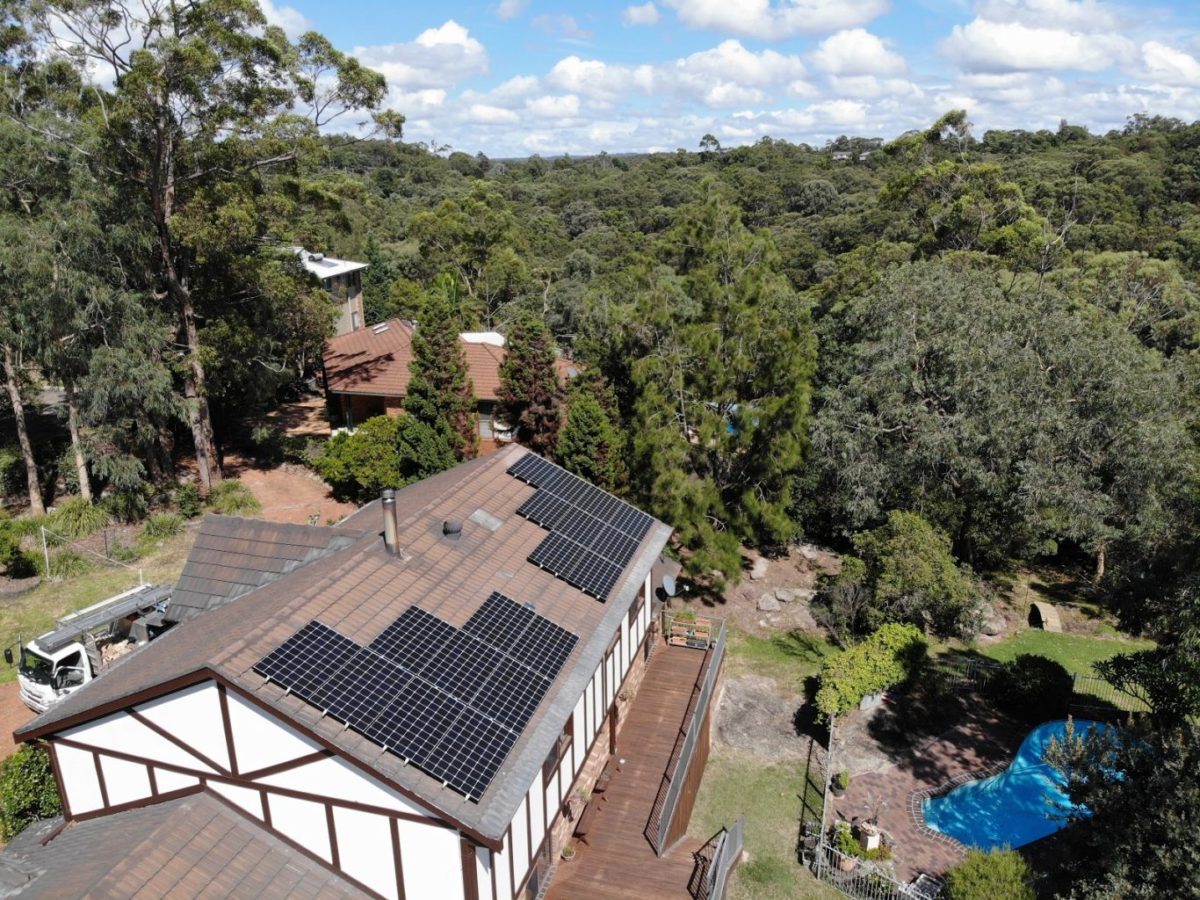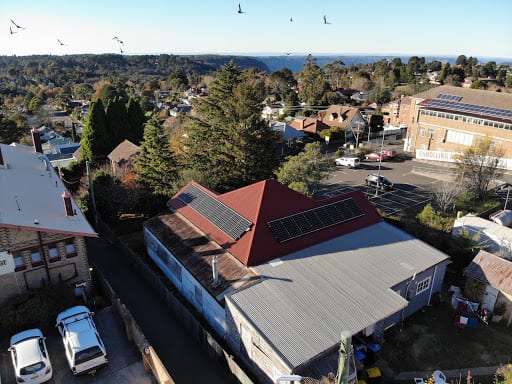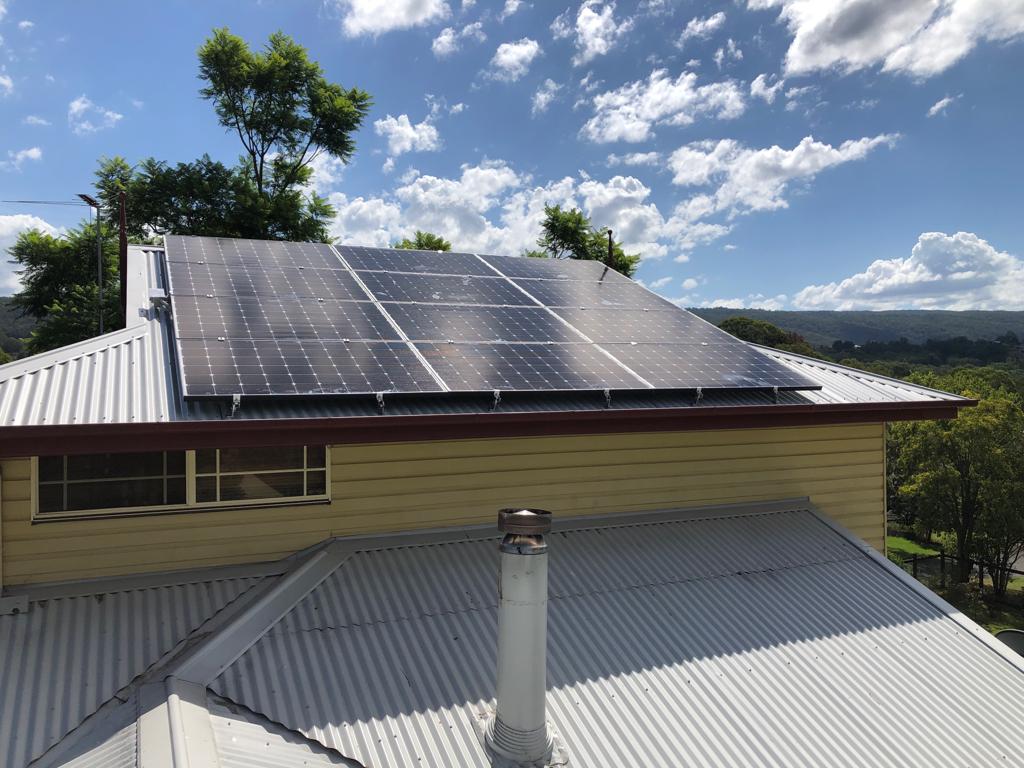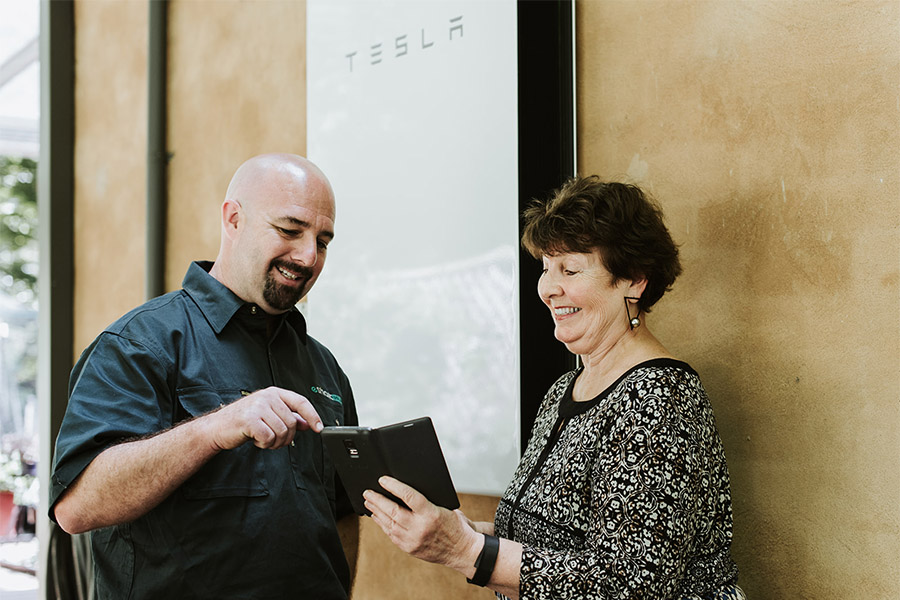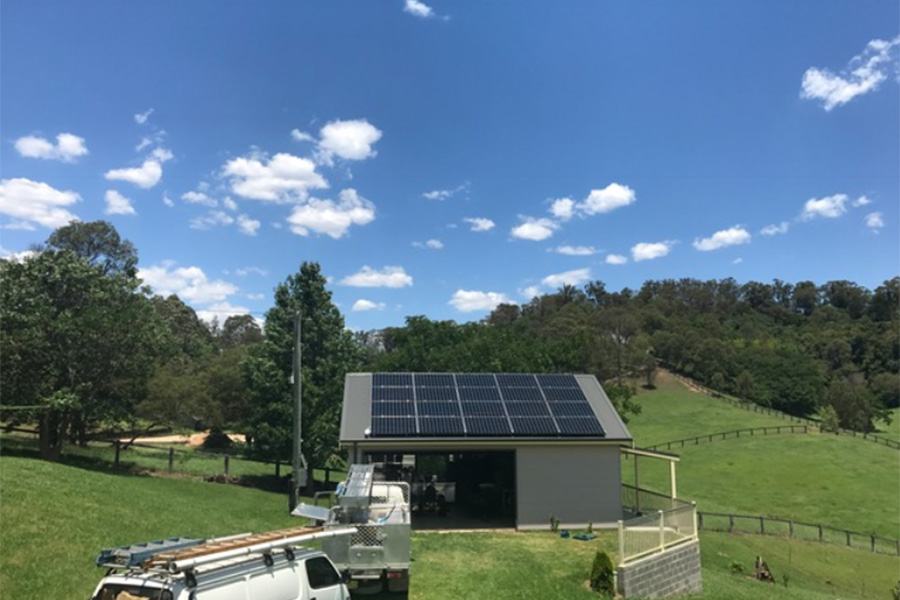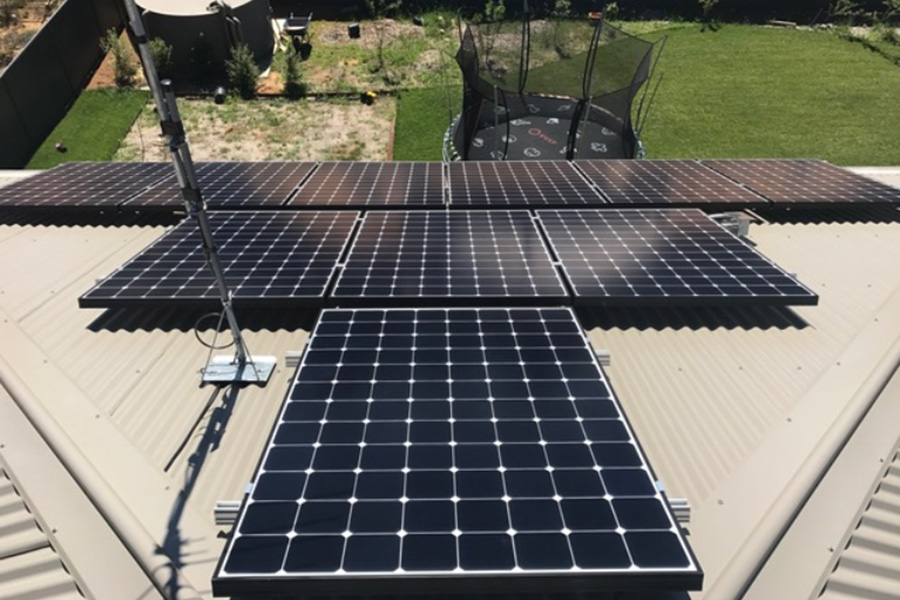As the cost of solar continues to fall, the number of installs is also increasing. However, before you make a decision, make sure you get more information from trustworthy sources.
1. How does a solar power system work?
A solar module is made up of a group of photovoltaic cells. They consist of 2 layers of silicon wafers which become positively and negatively charged when sunlight hits them. The charge created flows through a circuit of small wires connected to the wafers.
The PV modules generate Direct Current (DC) electricity and send it to the solar power inverter. The inverter transforms the DC power from the modules into Alternating Current (AC) electricity and feeds it back to the meter, ready to be used in the house or exported back into the grid/power poles.
2. How do you recognize a quality panel?
Like any product, not all manufacturers’ solar panels are equal. Some use the best quality materials and equipment to manufacture them and others do not.
Some manufacturers conduct extensive research and development into long term performance and have a deep understanding of how the materials will behave and others do not. Some manufacturers have decades of experience in manufacturing electronic equipment, others might have only recently moved into solar.
It’s not easy to tell the differences simply by looking at a solar panel. The glass and frame is simply the box/packaging surrounding the components which make the real difference. The real quality of a solar panel like an REC panel is reflected inside the solar panels, in the composite of chemically treated glass, chemically treated silicon cells, various plastics, protective films, aluminium, sealants and interconnecting wiring.
Solar panels spend their entire life in the hot sun and cold rain, harsh environment for any material, let alone a composition of different materials bonded together. Under such conditions, materials can – and do – chemically change over time reacting with each other and creating new chemicals and compounds as they age. Their elasticity also changes over their life affecting the stresses and tensions they place on each other. Cheaper panels sometimes use cheaper input materials and may have not been on Australian roofs long enough to see how these materials survive the harsh Australian sun.
Solar manufacturers with a strong understanding of materials science, who invest heavily in research and development, are able to understand and predict how these external conditions are likely to affect the materials. Some, who have been manufacturing consumer goods for many years also have the benefit of hindsight and learning. Typically, manufacturers who understand these issues will have accreditation to ISO standards for manufacturing and will have advanced quality assurance processes and controls described on their promotional material. True quality assurance is about understanding what causes variation and controlling it through research, not just checking the final product and hoping to identify faults or defects.
3. Is my roof suitable to install solar panels?
REC panels fit with many types of roof tiles.
The easiest roof to install solar on are metal roofs, either conventional up to 25 degree or flat. Tiled roofs are ok as well as long as the tiles are not too old and fragile. Slate roofs can have solar – but are more difficult and usually cost a bit more. Asbestos roof installations are not recommended and it would be strongly advisable to change the asbestos tiles or sheets first, before installing the solar system.
Naturally single storey homes are easier to access than double storey roofs but installers can install systems at most heights.
Also trees close to the roof can cause issues with overshadowing, and with leaves and branches covering the panels and reducing output. Micro inverters nowadays can offer an advantage in overshadow situation as they regulate the output of each panel individually. So if you have a strong possibility of overshadowing during the year micro inverters and or a solar edge set up can be more advantageous than the conventional solar power string inverter.
4. I’m building or buying a new home, should I install a solar system?
When buying or building a home it is possibly the easiest time to afford solar electric systems. You could simply add the cost of the system to the construction/purchase costs and therefore pay it with your new mortgage.
There are not many items in your home that will pay for itself after a few years, before starting to make money for you year after year. And then, when you decide to sell your home, you will reap the added desirability and resale value that solar provides. See real estate survey
There are solar panels installed in Australia in the early 1990s which are still producing electricity today, so you can expect the benefits of a quality, REC solar system to be available for decades to come.
5. How does shading and dirt affect the performance of my panels?
Solar PV panels should ideally be in full sun from at least 9am to 3pm, but it is more effective if they can be positioned to operate longer in the afternoon to support during the early evening peak hour spike in electricity costs. They should not be placed in shaded areas and should be kept free from dust and dirt. Usually, if dust accumulates and the panels are positioned on an angle, the next rainstorm will wash off the dust. Even a small amount of shade – from trees, roof ventilators or antennas – will have an impact on the output of a panel, as it changes the flow of electricity through the panel.
For most panels, shading or dirt on just one of the parts of a solar panel will result in a significant loss of power from that panel. REC panels enable solar collection to bypass a shade cell. So say there is a bird dropping on an individual solar cell within a panel, it will not adversely affect the rest of the panel. With panels connected together in strings down to the inverter, loss in one panel may affect the performance of other panels in the string, not just the one that is shaded.
Panels lying at an angle above 10° will self-clean when it rains, as our quality REC panels have glass which is designed to allow dirt to be washed off easily.
6. What are feed-in tariffs?
Feed-in tariffs (FIT) are a defined payment for the electricity you generate from your solar PV system that is sent back to the grid. Unfortunately currently in most States the energy retailers pay relatively low feed in tariffs ranging from 5c to 12 cents and varies based on State guidelines and also varies between electricity retailers. We recommend shopping around between retailers to determine the best available FIT rate for you.
In Australia solar system owners have benefited in the past from a range of generous “premium” feed in tariff schemes, but these offers are no longer available to new solar installations.
State based feed-in tariff schemes are defined and managed by State Governments who are responsible for energy policy and rules in each State. These State Governments define the minimum FIT electricity retailers can offer. Although increasingly when it comes to solar feed-in tariffs (FITs), this is left to the market to decide. In some States the FIT’s paid to you are mandatory and in some cases they are voluntary.
It is important to understand that these policies are State based and as an incentive mechanism they can and do vary over time. The duration, value, rules and conditions vary.
The value of the FIT is an important aspect which can influence the economic outcome of owning a solar system and what the ideal size of a solar system should be in your individual case. Good solar installation companies as part of their site visit should offer a detailed analysis of what they expect your particular self-consumption to export ration to be, and what your economic outcome will be.
FIT offers can vary from electricity retailer to electricity retailer and change over time, so it is important to be 100% clear what offers are available at the time you are considering solar. It is important that you get up to date advice from the solar system installer at the time you are ready to explore solar power.r.
From the industry’s perspective, fair feed-in tariffs are considered an excellent way to help consumers get a reasonable return on their purchase cost and thus help the renewable energy industry to grow and reduce costs.
7. Can a solar system reduce my electricity bill to zero?
Off grid solar systems with battery backup can produce zero electricity bills.
A solar system can help you reduce your electricity bill and in many instances by a significant amount, if you use the electricity at the time it is created. Nevertheless zero dollar future bills are next to impossible to achieve nowadays other than with off grid systems.
In Australia with Net Metering (explained in other parts of the FAQ’s), the electricity produced though your solar system is fed directly during the daytime into your home, office or commercial enterprise. This helps you to offset your consumption which you would have otherwise paid for. The bigger the system the more likely it will be that more solar power is generated than is used and the excess will be fed back into the grid.
The feed-in-tariff payment for the electricity you generate and feed back into the power grid can offset some of the cost for the electricity you use from the grid during overcast or rainy days or at night. Nevertheless because the feed in tariff nowadays is relatively low, 5c or so per kWh, you need to feed a lot of solar electricity back to the grid in order to offset the electricity you use at night or during cloudy and rainy days when you are likely to import electricity. Then to get a zero dollar bill you will also need to export enough solar electricity to pay the $70 of service/supply charge the electricity companies charge every three month.
This scenario and basic principle does not change if your solar system uses a string inverter or a micro inverter set up. In short, a well designed solar system will reduce your electricity bills, but a zero bill now that there is no more generous “premium” feed in tariff for new systems – is very rare. Zero dollar bills require an off grid system with batteries or a very very large solar system on your home, preferably with storage batteries.
The installation of batteries to a Solar System will enable power from the system to be stored and used at night or during high demand periods, This increases the ability to reduce electricity bills to zero. However, the cost of batteries, although it has reduced, is still relatively expensive. So for most situations these are not yet financially beneficial. With advances in technology and increases in economies of scale as more batteries are purchased, pricing of batteries will reduce over the next couple of years and will become a more viable alternative to add to Solar Systems.
8. What should I check in a quote before I buy a solar power system?
Make sure the installer comes to your house and has a look, before you get the quote. Internet based solar companies quote you for a system over the phone can spell trouble for the install quality, as they cannot truly appreciate the individual set up of your house.
- Are the tiles brittle?
- Where are any surrounding trees, which can cause overshadowing?
- What about antennas and chimney locations – which in the future through overshadowing can affect the system output significantly?
- How old is your switch board and does it need upgrading to handle solar?
All these questions only become clear through a proper home inspection.
When internet or call centre based solar companies sell you a system they use the one size fits all approach and give you a standard price. They then negotiate with a sub-contract installer to install your system for an agreed price. So the sub-contracted installer holds all the risk should your system requires extra cabling or is a particular labor intensive installation. It is more likely in this situation for the installer to find the quickest way, not necessarily the best way to install the system. Being a sub-contractor to the company that sold you the system, the installer’s relationship with your system is one of “get in and get out as quick as possible”.
Should you, in the years to come require support for your solar system, the internet based solar company might not be around anymore, or should they still exist are very likely to send a new sub-contractor to check out the issue. It is better, like with your car, to have the same reliable mechanic undertake the ongoing work. Someone who is familiar with your particular circumstances/system.
In general the quotation should provide solar system specifications like quantity of panels, brand and model of panels, system size and likely output per annum in kW/h, capacity and output of the inverter or if micro inverters are to be used the brand and warranty conditions.
A proper, considered quote should include also datasheets of the supplied products. In general make sure your quote includes:
- Solar PV modules – brand, model and manufacturer’s warranties;
- Mounting frames – brand, warranties and which part of the roof to be installed;
- Inverter – brand, capacity and manufacturer’s warranty;
- Any additional metering cost – if not included in the price, make sure this aspect is clearly outlined in the quote;
- Travel and transport requirements if not included;
- Any trench digging if solar to be installed on outbuildings e.g. farms.
At hand over, make sure the installer gives you a system user manual.
The quotation should also specify a total price, together with proposed start and completion dates. The quotation should form a basis for your contract with the designer/installer. Deposit requirements for the system by law should not be more than 10 per cent. Usually the majority of the solar system needs to be paid for on the day of installation.
9. What affects the cost and payback of a solar system?
The cost and payback of a solar power system is dependent on a number of factors, including:
- The cost of manufacturing panels
- The international availability of silicon
- The cost of inverters
- The installation cost
- Availability of product
- Quality of the components
- The fluctuating international currency
- Federal and state rebates (if any) available towards the cost of the system
- The cost of electricity and feed in tariff rates
The economies of scale in the manufacturing of components together with the above factors impact the final cost and payback to the consumer.
Over the past few years Government solar rebates have decreased. To offset this, the price of solar panels and inverters has reduced as manufacturing volumes increased and economic of scale benefits are passed on. For example, in 2008 a panel cost around $6 per watt = $1500 for a 250W panel, while the same panel in early 2016 would have cost about $200 per watt.
10. How do I check if I’m eligible for a solar system rebate?
There are a few key eligibility rules to be eligible for solar rebate on your system:
- The solar system must be an eligible small-scale solar PV, wind or hydro system. A normal solar power system for your home normally is an eligible system.
- The solar power system must be installed at an eligible premises. Examples include houses, townhouses, residential apartments and shops.
- The solar system must be a new and complete unit.
- No more than one system at an eligible premise (address) is entitled to Solar Credits.
- Solar Credits may only be created once for a particular solar installation, irrespective of whether the certificates are created for a 1-year, 5-year or 15-year deeming period.
- The electric solar system must have been installed no more than 12 months prior to the date of application for STCs.
Contact E-Smart Solar about any questions you may have about solar.


